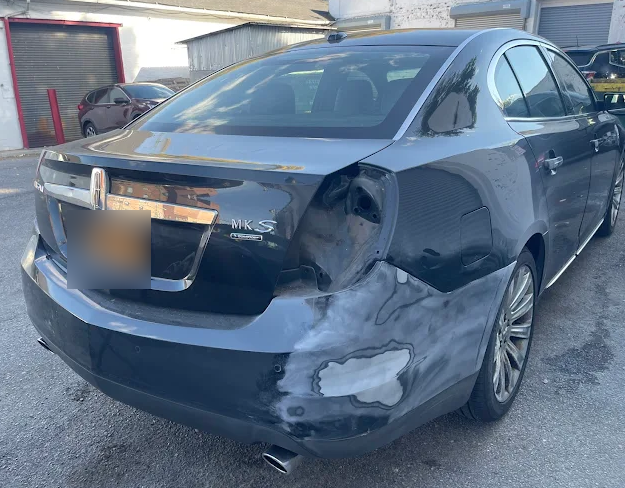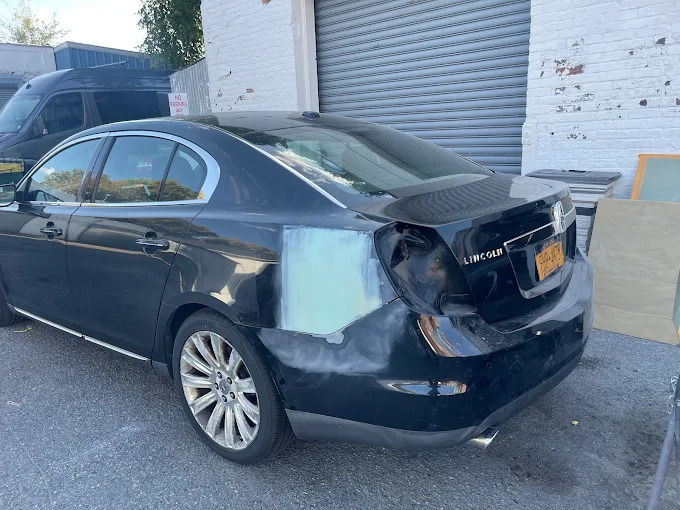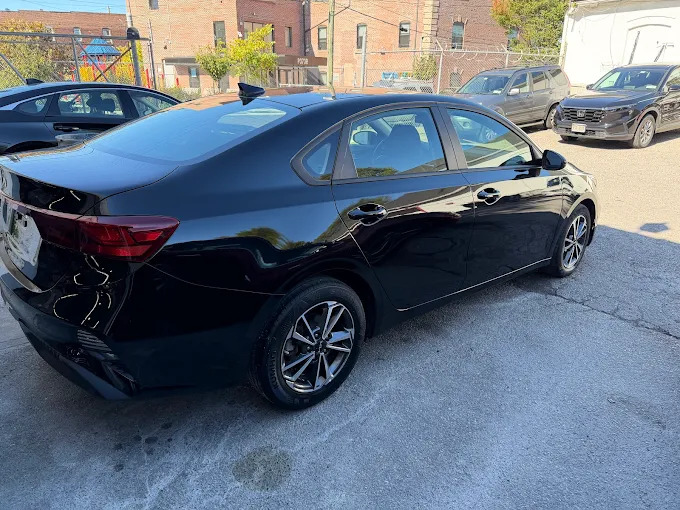What should I do immediately after a car collision in New York?
Navigating the moments after a crash can feel overwhelming, but knowing what to do immediately after a car collision in New York is crucial for protecting your safety and legal rights. It is important to remain calm and check for injuries while ensuring everyone is out of harm’s way if possible. New York state law and NYPD procedures require drivers to stop at the scene, exchange information, and report the accident promptly to authorities. Taking swift and responsible actions can help reduce the risk of further injuries and avoid potential traffic citations. Additionally, following the correct steps simplifies the insurance claims process and supports a fair resolution.
Why Immediate Action Matters in a New York Crash
Taking swift action immediately after a crash in New York is crucial to ensure everyone’s safety and prevent further accidents or injuries. Promptly addressing the situation allows for the timely involvement of emergency services, which can provide necessary medical attention and secure the scene. Acting quickly also helps preserve evidence and details that are vital for insurance claims or legal processes.
The Importance of Quick Safety Checks
Conducting safety checks right after an accident helps identify injuries and assess the condition of all involved parties, including drivers, passengers, and pedestrians. It also enables drivers to determine if vehicles pose any hazards, such as leaking fluids or fire risks, which must be managed to avoid additional harm. Performing these checks immediately can facilitate faster emergency response and reduce the severity of potential complications.
How NY Traffic Laws Affect Post-Accident Steps
New York traffic laws require drivers involved in a crash to remain at the scene and exchange information, emphasizing responsibility and transparency. Understanding these legal obligations helps drivers comply with requirements such as reporting the incident to authorities, especially when injuries or significant property damage occur. Following these laws ensures that the proper protocols are met, protecting all parties legally and promoting fairness in accident resolution.

Ensuring Personal and Passenger Safety
Immediately after an accident, prioritize the safety of yourself and your passengers by staying calm and assessing the situation. Remain inside the vehicle if it is unsafe to exit, especially on busy roads, and ensure that everyone is wearing seat belts until it is safe to move. If conditions allow, turn on hazard lights to alert other drivers and prevent further collisions.
Checking for Injuries and Calling 911
Carefully check yourself and others for any injuries, no matter how minor they may appear, since some symptoms might not be immediately obvious. If anyone is hurt or if the accident is serious, call 911 right away to get emergency medical help and police assistance. Provide clear information about your location, the number of people involved, and the nature of the injuries to the dispatcher.
Moving Vehicles to a Secure Spot
If the vehicles involved are drivable and the accident is minor, move them to the side of the road or a nearby safe area to avoid blocking traffic and reduce the risk of secondary crashes. Use caution when exiting the vehicles and ensure all passengers move to a safe location away from traffic. This helps keep the scene safe for emergency responders and other drivers while you handle the next steps.
Notifying Authorities and Legal Obligations
When an incident occurs that involves a traffic collision or any law violation, it is crucial to notify the appropriate authorities promptly. Timely reporting helps ensure proper documentation, investigation, and legal compliance, which can protect all parties involved. Failing to notify the correct agency may lead to legal consequences or complicate insurance claims.
When to Dial NYPD vs. State Police
The decision to contact the New York Police Department (NYPD) or the State Police depends on the location of the incident. The NYPD should be called for any incidents within New York City limits, while the State Police handles cases in other parts of the state. Understanding this distinction ensures that the correct jurisdiction responds quickly and takes proper action.
Obligations Under Vehicle & Traffic Law §605
Vehicle & Traffic Law §605 mandates that drivers involved in a collision must stop immediately and provide their identity and insurance information. Additionally, they must render aid if anyone is injured and report the accident to authorities if required by law. Compliance with these obligations helps maintain safety and legal accountability on the road.
Collecting Driver and Insurance Details
Exchange full names, addresses, driver’s license numbers, license plate numbers, and insurance company and policy numbers with all drivers involved. This ensures that insurers can verify coverage and contact all parties without delay.
What Data to Swap with Other Motorists
Ask for each driver’s vehicle make, model, color, VIN if possible, and collision description in writing. Stick to factual details without admitting fault—“I didn’t see you” is safer than “It was your fault.”
Gathering Witness Names and Contacts
Bystanders often disappear—politely request their names and phone numbers right away. A quick statement like “I saw the blue sedan run the red light” can later bolster your claim.
Capturing Evidence at the Collision Site
Photos and videos are your best allies. Shoot every angle of both vehicles, road conditions, traffic signals, and any debris. Don’t forget interior shots if airbags deployed or there’s glass on seats.
Photographing Vehicle Damage and Road Conditions
Close-ups of dents, scratches, cracked lights, and broken glass show collision impact. Wide shots reveal context: road lanes, signage, skid marks, or potholes that might have contributed.
Sketching an Accident Diagram
Even a simple drawing marks pre- and post-impact positions of vehicles, arrows for directions, and distances between key points. Include notes on speed estimates or weather conditions.
Notifying Your Insurer Promptly
Contacting your insurer as soon as possible after an incident ensures that your claim process begins without unnecessary delays. Prompt notification allows the insurer to provide guidance on the next steps and start their investigation while the details are fresh. It also helps protect your rights and may be required to meet policy deadlines.
How to File a Claim with Minimal Delay
Gather all necessary documentation, such as photos, police reports, and medical records, before submitting your claim to avoid back-and-forth requests. Use your insurer’s preferred method—online portal, phone, or app—to expedite the process efficiently. Clear and accurate information in your claim will reduce processing time and get you closer to resolution.
Avoiding Common Reporting Mistakes
Double-check all details for accuracy, including dates, policy numbers, and descriptions of the incident, to prevent delays caused by corrections. Avoid exaggerating or omitting facts, as this can lead to claim denial or legal issues. Keeping a detailed record of communication with your insurer helps resolve possible disputes quickly.

Filing Form MV-104 with the NY DMV
Filing Form MV-104 is a crucial legal requirement when involved in a crash that results in injury or property damage exceeding $1,000, and it must be filed within 10 days of the incident according to VTL §605. This applies regardless of whether police have filed their own accident report, emphasizing that your submission is mandatory to stay compliant with DMV regulations. The form helps ensure the incident is officially documented and can be used for insurance and legal purposes.
Eligibility and Deadlines
All drivers involved in reportable crashes are required to file Form MV-104 to maintain compliance with New York State laws; neglecting this obligation can lead to penalties. The DMV does not accept submissions online, so drivers must either mail the completed form or deliver it personally to the specified DMV location indicated on the form’s back. Timely filing helps avoid penalties and ensures your accident report is properly documented within the required timeframe.
Step-by-Step Completion Guide
Before filling out MV-104, gather essential information such as police report details, damage estimates, and witness contact info to ensure accuracy and completeness. Carefully print all required information, sign and date the form, and send it via certified mail to have proof of compliance and timely submission. Following these steps helps prevent delays or issues with processing your report and provides a clear record that your filing was completed on time.
Seeking Professional Evaluation
Schedule a medical checkup within 48 hours after an accident, even if you don’t experience severe pain. Early evaluation helps identify hidden injuries like concussions or soft-tissue damage before symptoms worsen. Most insurance plans cover the initial emergency room or urgent care visit under no-fault benefits, so don’t delay.
Why Even Minor Aches Need Attention
Even small aches deserve medical attention promptly because delayed symptoms can complicate insurance claims. Insurance companies often challenge injuries reported late, stating they may not be related to the accident. Early medical records clearly link your pain to the crash, preventing doubts about other causes.
Documenting Medical Records
Create a dedicated physical or digital folder to store every relevant medical document, such as doctor’s notes, X-rays, prescriptions, and therapy bills. Keeping these organized helps your insurance adjuster or personal injury attorney accurately assess your damages and strengthen your claim.
Special Procedures for Unidentified Drivers
If you are involved in a hit-and-run accident where the other driver leaves the scene, immediately call 911 to report the incident. Gather any information you can, such as partial license plate numbers, vehicle make and model, and the direction they traveled, to help law enforcement track down the driver.
Reporting to Law Enforcement and DMV
After a hit-and-run, file a police report to officially document the incident. Additionally, complete form MV-104 with the note “hit-and-run” in the uninsured motorist section to protect your coverage rights under no-fault and uninsured motorist insurance policies.
Insurance Options for Hit-and-Run Victims
Uninsured Motorist (UIM) insurance typically covers injuries and damages caused by hit-and-run drivers. Review your insurance Declarations Page to confirm your UIM limits and contact your agent to initiate a claim specific to the hit-and-run incident.
Navigating Personal Injury Claims
For significant injuries, consult a personal injury lawyer experienced in New York crash claims to navigate complexities. They will explain how to establish the serious injury threshold needed to pursue compensation for pain and suffering beyond medical expense reimbursement.
When to Consult a Lawyer
Consider hiring an attorney if your medical bills surpass $50,000, fault is disputed, or your insurance claim is delayed. Many law firms offer free case evaluations, letting you understand your legal options without any commitment to proceed.
Understanding No-Fault and Liability Coverage
New York’s no-fault system pays up to $50,000 for medical costs regardless of who caused the accident. To recover damages for pain and suffering, you must demonstrate a serious injury as defined by law or show that your medical expenses exceed Personal Injury Protection (PIP) limits.

Choosing a Reputable Auto Body Shop
Select an auto body shop certified by your vehicle manufacturer to guarantee repairs meet factory standards and preserve your warranty. Ask for personal recommendations or read local Google reviews to find trusted repair shops near you.
Using OEM vs. Aftermarket Parts
Original Equipment Manufacturer (OEM) parts are designed to exactly match your vehicle’s factory specifications, but generally cost more. Aftermarket parts are less expensive and quality varies, so check your insurance policy for any requirements, especially for crucial safety repairs.
Repair Estimates and Rental Car Rights
Always obtain at least two written repair estimates to compare costs and scope of work before committing. Review your insurance policy’s rental car coverage; if none is provided, ask repair shops about discount rentals or use affordable ride-hailing options during the repair process.
Tips to Reduce Risk After an Accident
Installing a dash cam in your vehicle can record real-time incidents and deter reckless drivers. Keep an accident kit with essentials like a flashlight, notepad, pen, and a contact information card ready for any unexpected roadside emergencies.
Installing Dash Cams and Safety Apps
Dash cams are relatively inexpensive (starting around $50) and are easy to install, providing 24/7 video logging. Safety apps such as Waze and NYPD 311 offer real-time updates about traffic, accidents, road closures, and police activity, making your drives safer.
Defensive Driving Refresher
Enroll in a state-approved defensive driving course to improve your safety on the road and potentially qualify for insurance discounts. Staying updated with New York’s traffic laws by regularly reviewing the DMV website helps maintain safe driving habits.
FAQs
What should I do immediately after a car collision in New York?
Immediately ensure safety, call 911 if needed, exchange information, document the scene, and file any required police or DMV reports.
How soon should I file the DMV report when asking what I should do immediately after a car collision in New York?
File Form MV-104 within 10 days if injuries occurred or damage exceeds $1,000 to avoid license suspension.
Why is it important to know what to do immediately after a car collision in New York?
Timely actions protect health, legal rights, and insurance benefits—missing steps can lead to denied claims or fines.
Can I move my vehicle when considering what to do immediately after a car collision in New York?
Yes, if it’s safe, move to a secure location off the road and turn on hazards to prevent further accidents.
Who should I call regarding what I should do immediately after a car collision in New York?
Dial 911 for emergencies within NYC, 311 for non-injury collisions in NYC, or State Police outside city limits.
Do I need a lawyer when wondering what I should do immediately after a car collision in New York?
For serious injuries or complex liability, consult an attorney early to navigate no-fault thresholds and maximize compensation.
Conclusion
By prioritizing safety—checking for injuries, calling 911 when needed, and moving to a secure spot—you protect your health and preserve evidence that may otherwise vanish. Exchanging accurate driver and insurance information, thoroughly documenting the scene with photos and sketches, and filing Form MV-104 with the NY DMV within ten days ensures legal compliance and streamlines your insurance claims. Keeping all records organized, consulting an attorney for serious injuries, and adopting preventive tools like dash cams and defensive driving strategies support your recovery and help reduce future crash risks.
